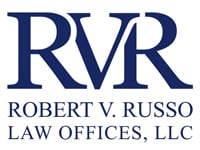Many different kinds of choices can cause car crashes. The decision to pick up a mobile phone while at the wheel could lead to a distraction-related wreck. The choice to get behind the wheel after drinking could also very well lead to a completely preventable collision.
However, not every decision that ultimately leads to a wreck involves someone making an obviously dangerous choice. Sometimes, the simplest and most banal of decisions could lead to a car crash. Many collisions take place at intersections, and those crashes could lead to major expenses and inconvenience or even serious injuries. One seemingly innocent choice that people frequently make at intersections has a strong association with preventable collisions.
Turning left is a risky choice
Many motorists simply choose the fastest and most direct route to their destination with little regard for the maneuvers that they will need to complete and route. Sometimes, that focus on efficiency might mean that someone turns left at one of the busiest intersections in their community. Their risk of a crash when turning is higher than they likely realize.
A left-hand turn is one of the most dangerous traffic maneuvers. They are slow and leave someone largely exposed to oncoming traffic. Roughly 61% of the collisions reported at intersections involve at least one vehicle attempting to complete a left-hand turn. The heavier the traffic is and the faster the general flow of traffic travels, the greater the possibility of a wreck when performing what is a very basic driving maneuver. Such collisions can easily result in secondary wrecks caused by those who fail to properly monitor their surroundings as they approach the intersection.
How can people protect themselves?
The simplest means of avoiding a left-hand collision will be to minimize how often one turns left in traffic. Reconsidering where someone drives and planning a route that is slightly longer or more circuitous could eliminate dangerous maneuvers. This approach can be particularly beneficial during times of heavy traffic or at very dangerous or busy intersections.
Understanding what choices might contribute to someone’s overall traffic risk can help people make decisions that could ultimately improve their safety. This same understanding can help crash victims to better understand who may potentially be held liable for causing their harm.

